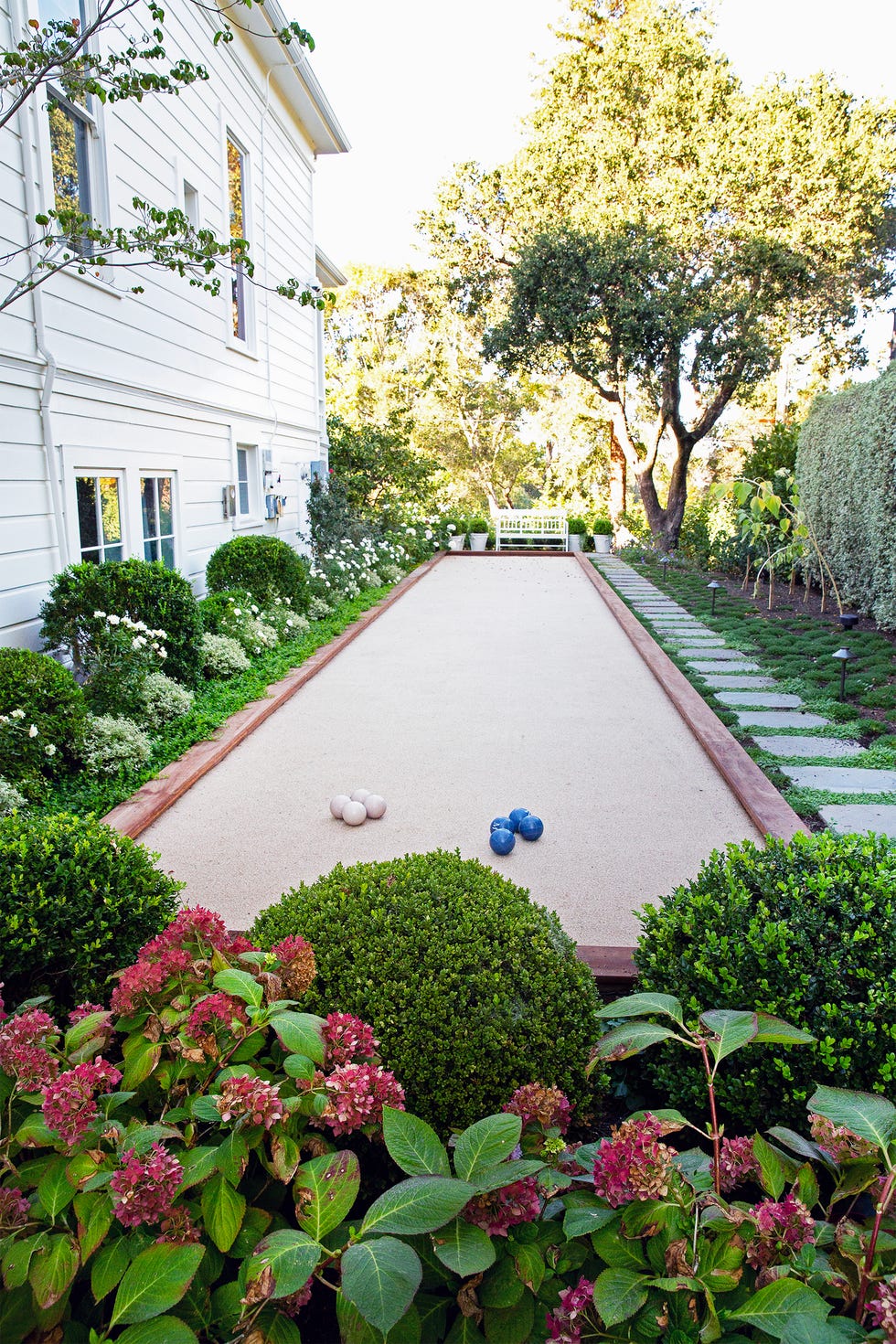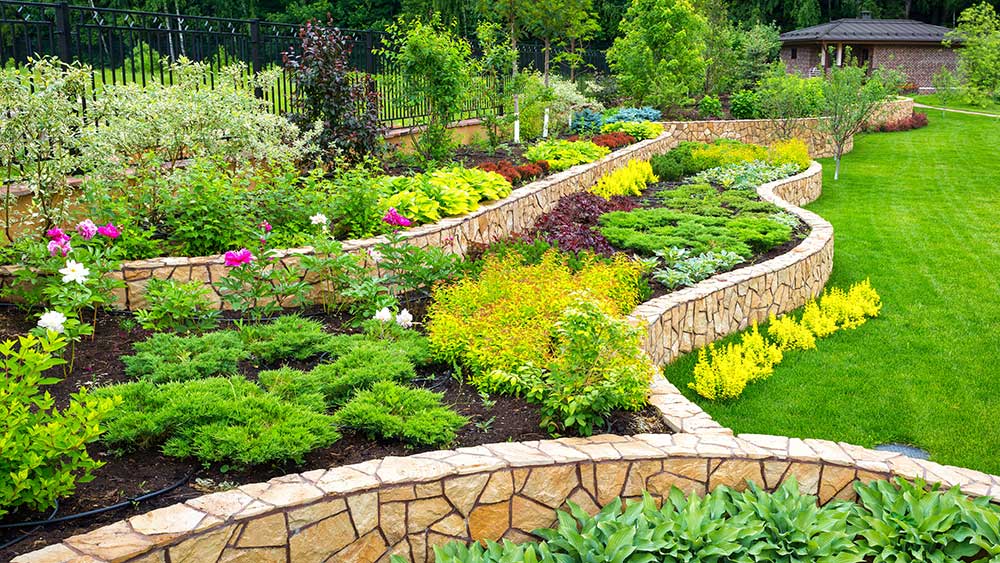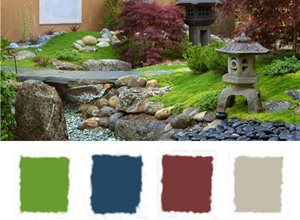The 6-Second Trick For Landscapers
The 6-Second Trick For Landscapers
Blog Article
Not known Details About Landscapers
Table of ContentsThe Of LandscapersEverything about LandscapersHow Landscapers can Save You Time, Stress, and Money.Landscapers Fundamentals ExplainedThe Definitive Guide for LandscapersAll about Landscapers
- A yard feature where water is stood for by an aggregate rock item, typically a crushed rock or granite. These are most generally located in contemporary and Japanese garden design.- A stone or natural flagstone patio area, path, or pathway constructed without a concrete base. The base would certainly be compressed gravel and the joints would be an aggregate or walkable ground cover. - A rock retaining or free standing wall constructed without making use of mortar. A very proficient mason is required for a dry pile stone wall. The majority of wall surfaces in Portland are not dry piled, also if they seem. - An underground framework that collect water and allows it to slow percolate into the soil around it.
Landscape style that is compatible with a websites' environment in both look and sustainability without adverse impacts to the setting. Edging in the landscape is a line of separation that develops visual interest in the garden by separating one section from another segment.
Locations can additionally have a sensation of "room" offered by trees, various other plantings, fencings, or displays. The landscape near the entry to a structure.
Our Landscapers Statements

The element in a landscape design or location in a landscape that is meant to be most famous. The focal point can be a plant, rock, sculpture, collecting area, or various other landscape function.

A Biased View of Landscapers
Reduced plants that are permitted or motivated to spread out over a location. Can refer to any kind of "hard" garden aspects including statuary or boulders but most commonly is used to refer to paths, patio areas, and walls - Landscapers.: Elevation distinction in between the level of water in a pond (or the level of the pump if it rests outside the pond) and the top electrical outlet of water which affects performance of the water pump in gph (gallons per hour).
A chemical used to regulate weeds. Fencing boards that run horizontally, often made use of in modern or Japanese-inspired landscape layouts. Lines that specify areas within a landscape concept. These commonly expand from corners or key features of an existing framework. Correct usage of imaginary lines can aid the landscape really feel attached to the home and other aspects.
A more relaxed yard dominated by bent instead than straight bed lines and a less stiff structure. Traditional PNW landscapes from this source are casual. A plant that spreads out greater than desired, or into environments where it does damage. Portland has a list of intrusive plants that must not be mounted in landscapes since they can infect forests or rivers and be challenging to regulate.
Landscapers - Truths
Smart irrigation controller reviews and recommendations right here. 2-D rendering of the proposed irrigation system. Can consist of head placements and protection, pipe sizing, GPM specs, and products needed to mount this system. A watering plan is normally unneeded for properties yet is common for commercial tasks. Accredited specialist that creates landscapes, educated in engineering and architecture as well as in gardening.
The specialist who intends and creates landscape jobs, typically at a household or little business level with the major layout catalyst on plantings. Landscape visit here designers typically have learn this here now much less education than Landscape Architects and are not licensed. A finished landscape layout, detailing all elements for the new landscape. This usually takes the form of a drawing on paper.
Calcium product used to raise the pH in dirt, which will make it much less welcoming to moss (Landscapers). A water tight HDPE material used beneath ponds, streams and waterfalls in water functions. Making use of many growings of the exact same range to fill out an area in the landscape. This can lower maintenance and water use in the garden.
A mix of concrete, sand, and water that is made use of in stone stonework for establishing stones and joints. A layer of compost or bark dust applied at the base of a plant. A mass planting of moss. A plant that was present in a geographic area before people started altering the landscape.
Landscapers Can Be Fun For Anyone
How the yard or a yard aspect is set up in relationship to an existing or new function or to a direction. Lawns that are not mowed however expanded in landscapes as perennials.

Plants that supply seasonal passion and then pass away back in the winter. Cold season turf that is the most common lawn yard in Portland, OR and the rest of the PNW.An open roofed framework over a patio area or various other landscape function.
Lava aggregate varying in dimension from 1/4" down to dust. One of the most usual landscape crushed rock in the PNW. Area of the landscape developed to deal with rainfall water up until it can saturate right into the ground. A chain that manages water as it takes a trip from a roofing system seamless gutter to the ground. Yard structure that develops a growing location that is had and greater than the surrounding grade.
Producing a garden feature being composed mainly of stones with plantings that complement and can thrive in the rough environment. Lawn sprinkler head style that turns a stream of water across an area.
An Unbiased View of Landscapers

Report this page